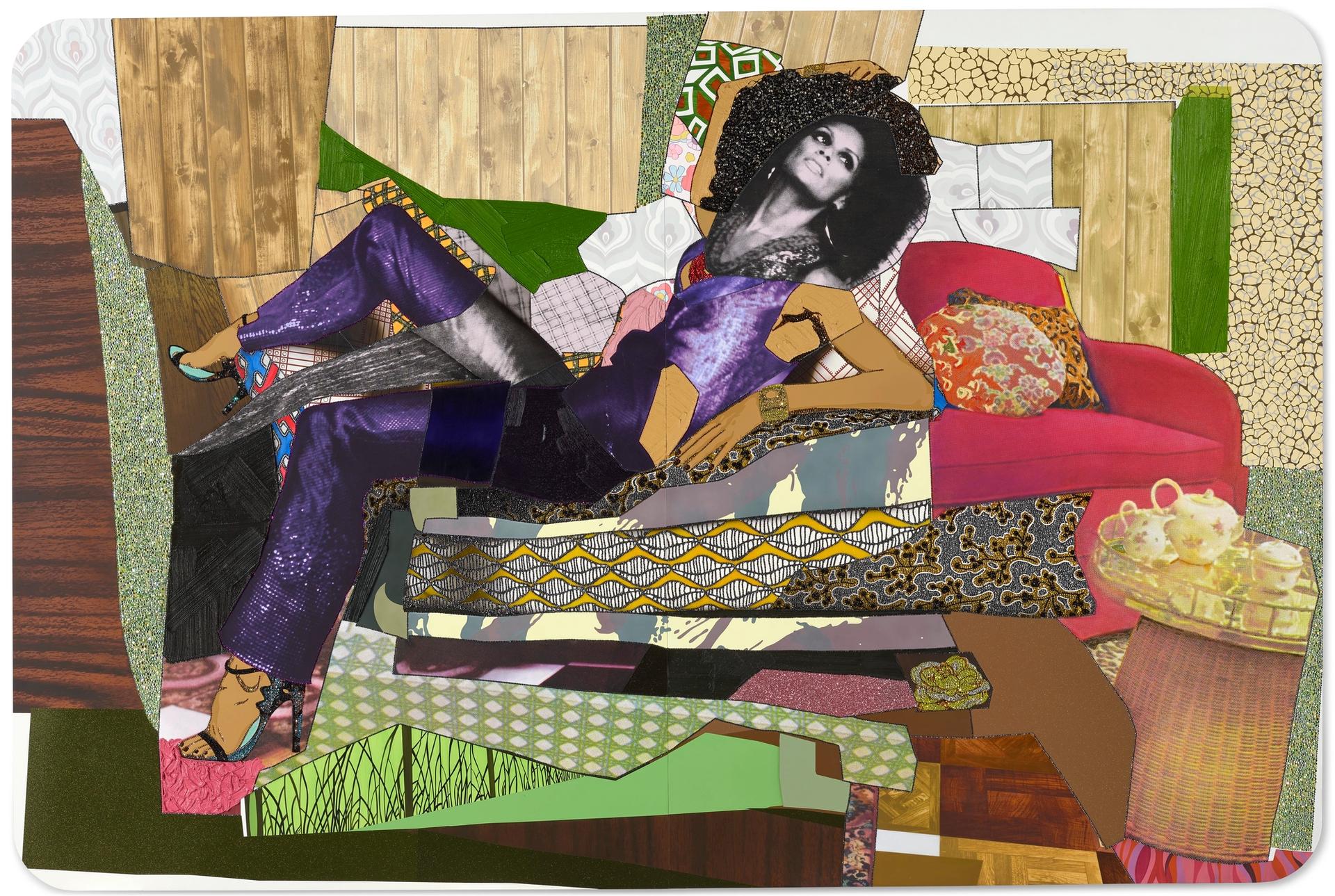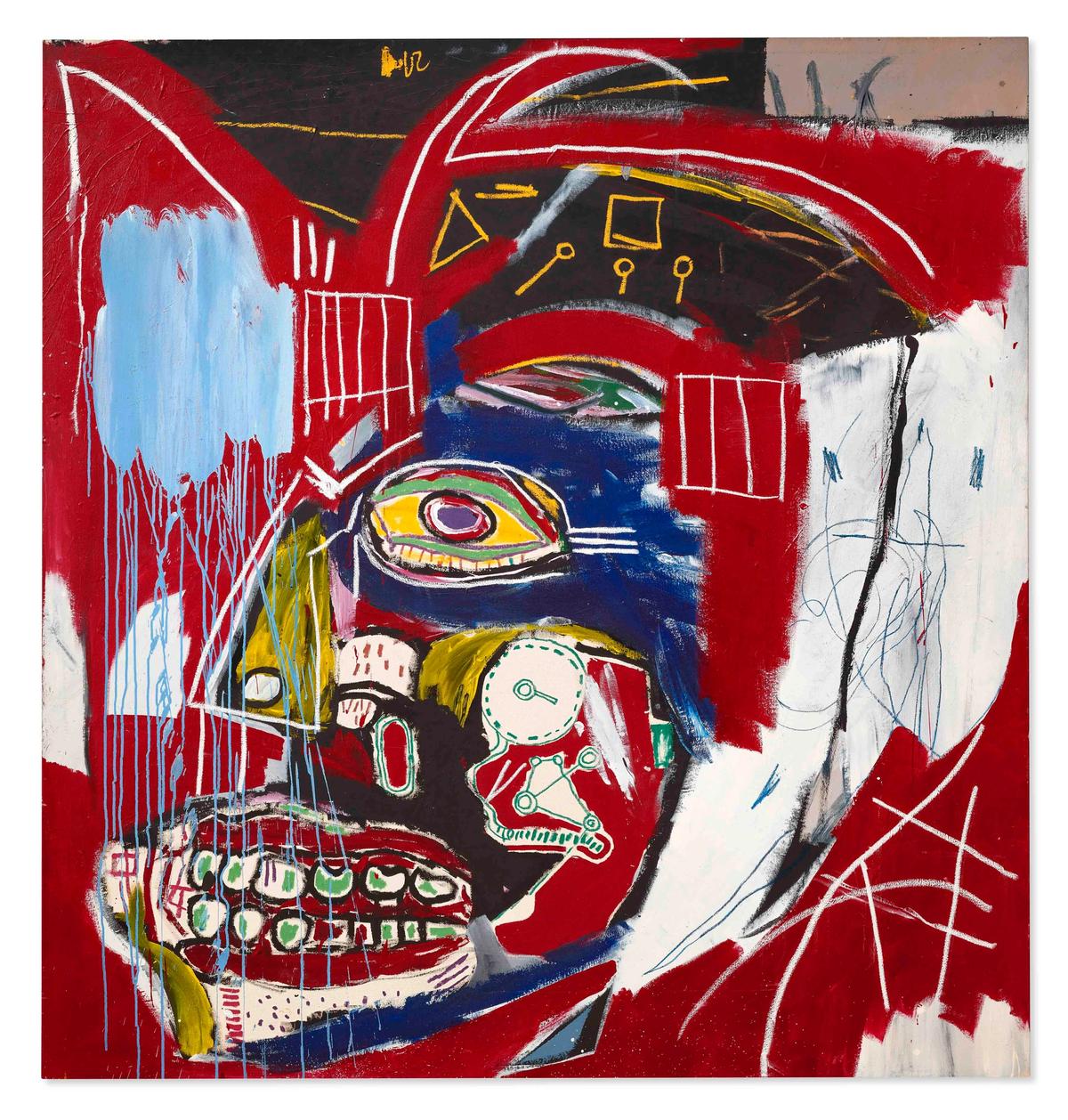For its first ever 21st-century evening sale last night, Christie’s hired in the writer and TV personality Derek Blasberg and model Precious Lee to play the hosts of a futuristic introductory broadcast designed to appear as though they were wandering through some light-filled corner of cyberspace.
In the New York saleroom, Basquiats shared the limelight with an NFT (both bringing in many millions), and a virtual audience of observers, who were given special behind-the-scenes access to the proceedings, appeared as floating heads superimposed onto stadium seating—courtesy of Microsoft technology.
Their efforts have appeared to pay off: 95% of the auction’s 39 lots sold, bringing in a total of $210.4m (including fees), against a roughly $146m pre-sale estimate. Basquiat’s explosive head, In This Case (1983), one of three such works in existence, soared to $81m ($93.1m with fees), well above its $50m estimate but notably underperforming its sibling, Untitled (1982), which sold for $110m (with fees) in 2017—still the record for an American artist at auction.

Mickalene Thomas's Racquel Reclining Wearing Purple Jumpsuit Courtesy of Christie's
The tech duo Larva Labs’ 2017 NFT, 9 Cryptopunks: 2, 532, 58, 30, 635, 602, 768, 603 and 757, part of the first art collection on the Ethereum blockchain, hammered for $14.5m ($16.9m with fees), eclipsing its $9m high estimate, though well shy of Beeple’s $69.3m smash record earlier this year. It is still an eyebrow-raising figure, particularly when juxtaposed with the depth and complexity of Kerry James Marshall’s Nat-Shango (Thunder) from 1991—depicting Nat Turner, the Virginia preacher who led a rebellion of enslaved people—which sold for its low estimate of $6.5m ($7.5m with fees). The artist's record stands at $21.1m, paid by the rapper Sean P. Diddy Combs for Past Times (1997), in 2018.
Christie’s specialist Noah Davis said in a post-sale conference that he believed the NFT market had a durable future. But, he added, the currency (crypto or fiat) that was used to buy Larva Labs’ nine pixelated avatars, including a rare alien, was not yet clear.

Nina Chanel Abney’s Untitled (XXXXXX) Courtesy of Christie's
The sale included artists who emerged in the 21st century and those, like Cindy Sherman and Matthew Barney, whose work in the 1980s and ’90s “ushered us into the 21st century,” said specialist Ana Maria Celis in the opening feature. Together, she said, they represent the last 40 years of art-making. In general, though, bidding energy—which came from 29 countries—gravitated toward recent works by in-demand contemporary names. Bidding wars sent Jonas Wood’s sunny Two Tables with Floral Pattern (2013) up to $5.4m ($6.5m with fees), significantly over its high estimate of $4m, and Nina Chanel Abney’s graphic Untitled (XXXXXX) (2015), which portrays an alternative reality in which Black policemen detain a kneeling white man, up to $800,000 ($990,000 with fees), more than double its high estimate of $300,000.
A brief flurry of bidding gave Mickalene Thomas an auction record for Racquel Reclining Wearing Purple Jumpsuit (2016), which sold for $1.5m ($1.8m with fees), more than double its $600,000 high estimate. The sale achieved 11 records in total, including for Jordan Casteel, Alex Da Corte, and Lynette Yiadom Boakye, the latter two who currently have works on view at major institutions—at New York's Metropolitan Museum of Art and Tate Britain in London respectively. Casteel closed her acclaimed solo exhibition of paintings at the New Museum earlier this year.

Jonas Wood's Two Tables with Floral Pattern Courtesy of Christie's
The sales that came in under their estimates tended to be the more established names, like Martin Kippenberger, whose 1989 Martin, ab in die Ecke und schäm dich (Martin, Into the Corner, You Should Be Ashamed of Yourself) hammered for $8m ($9.5m with fees), shy of its low estimate of $10m but still achieving a record for the artist in the medium of sculpture. Gerhard Richter’s Abstraktes Bild (1992) went for $5.8m ($6.9m with fees), well below its $9m low estimate, and two Christopher Wool paintings failed to meet their estimates.
Of the 39 lots, nine went to Asian buyers, while a little over half found homes with American buyers, and the rest went to Europe—representing a bidding depth that Christie’s chief executive Guillaume Cerruti said was encouraging given the challenges of the last year. “Demand and supply are finally aligned,” he said in the post-sale conference. “It’s a very good signal for the sales ahead.”


